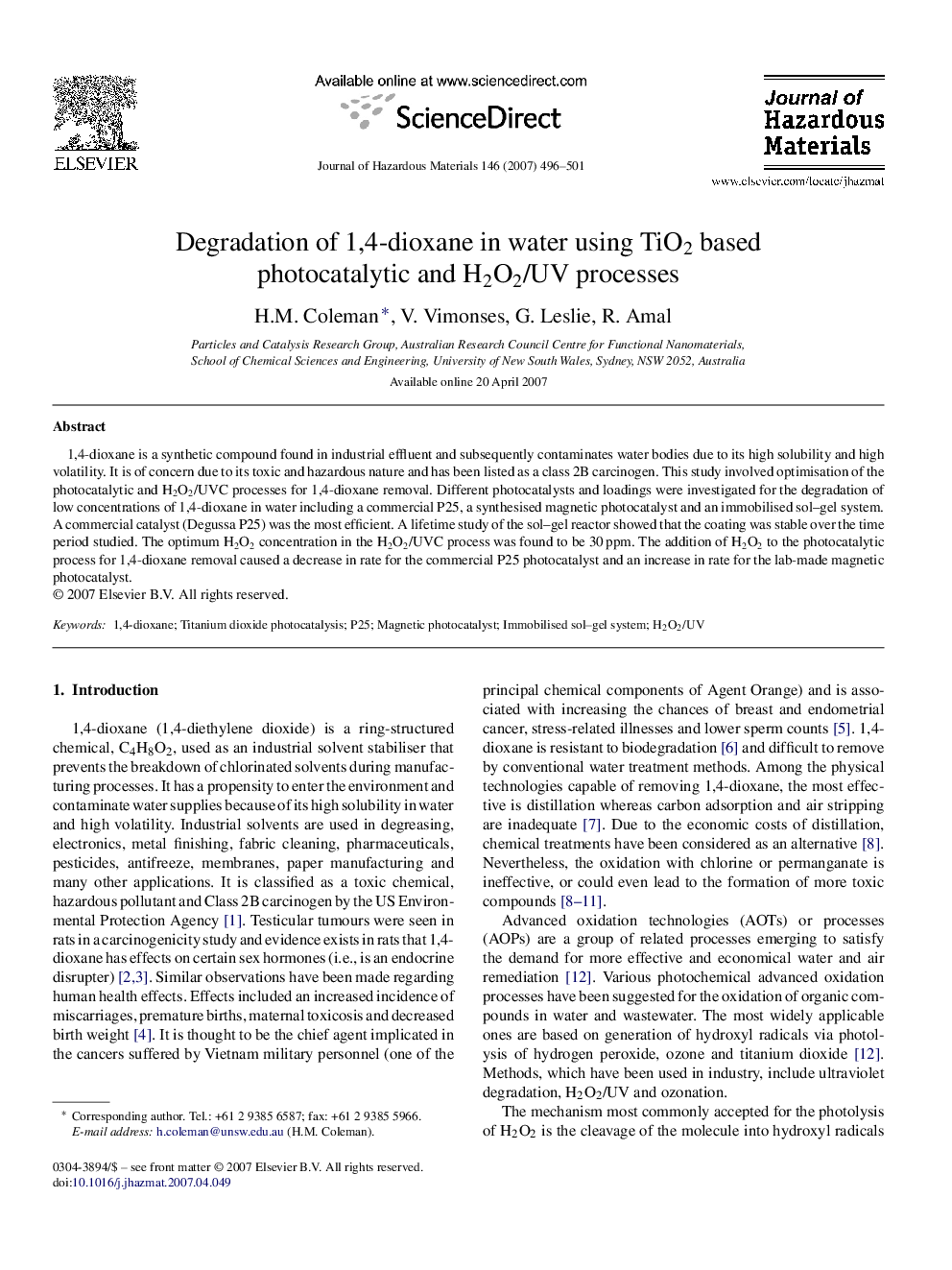| Article ID | Journal | Published Year | Pages | File Type |
|---|---|---|---|---|
| 584621 | Journal of Hazardous Materials | 2007 | 6 Pages |
Abstract
1,4-dioxane is a synthetic compound found in industrial effluent and subsequently contaminates water bodies due to its high solubility and high volatility. It is of concern due to its toxic and hazardous nature and has been listed as a class 2B carcinogen. This study involved optimisation of the photocatalytic and H2O2/UVC processes for 1,4-dioxane removal. Different photocatalysts and loadings were investigated for the degradation of low concentrations of 1,4-dioxane in water including a commercial P25, a synthesised magnetic photocatalyst and an immobilised sol-gel system. A commercial catalyst (Degussa P25) was the most efficient. A lifetime study of the sol-gel reactor showed that the coating was stable over the time period studied. The optimum H2O2 concentration in the H2O2/UVC process was found to be 30Â ppm. The addition of H2O2 to the photocatalytic process for 1,4-dioxane removal caused a decrease in rate for the commercial P25 photocatalyst and an increase in rate for the lab-made magnetic photocatalyst.
Related Topics
Physical Sciences and Engineering
Chemical Engineering
Chemical Health and Safety
Authors
H.M. Coleman, V. Vimonses, G. Leslie, R. Amal,
